GALLICA - Texas Coritani
advertisement
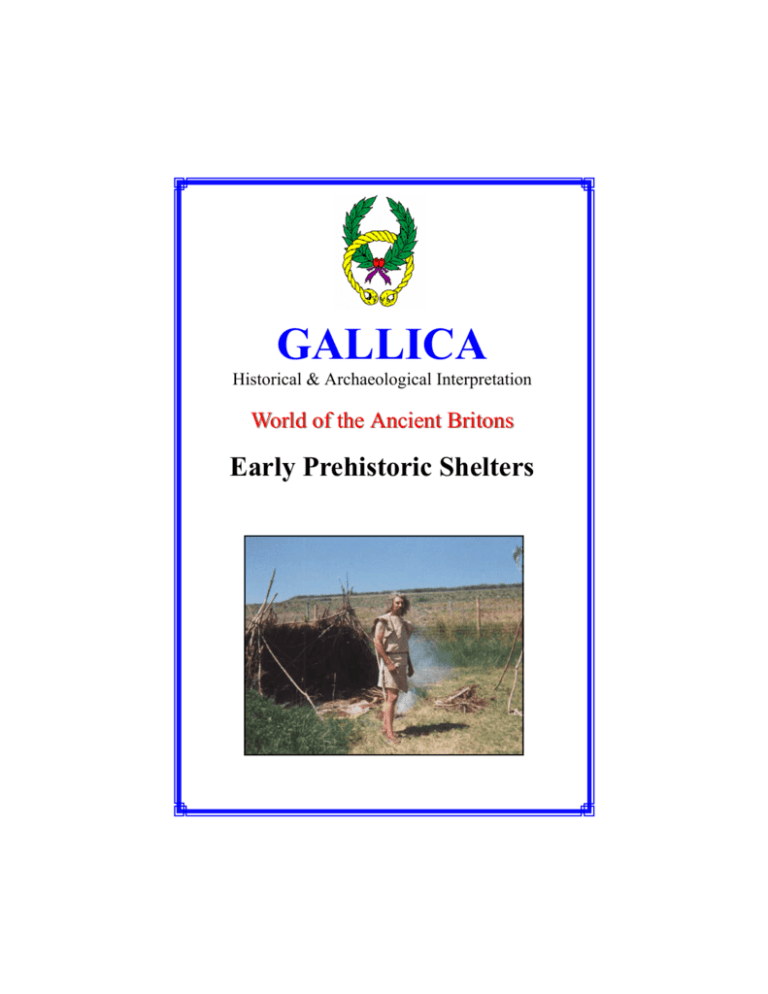
GALLICA Historical & Archaeological Interpretation World of the Ancient Britons Early Prehistoric Shelters Introduction I have been interested in archaeology and history most of my life. In the last 25 years I have worked on a number of archaeological re-constructions around Britain. Over that period I have developed a unique method of teaching school children about the past. Part of that teaching includes the importance of housing – somewhere to live. Since 1998 I have spent some time working on a Mesolithic site on Portland, building shelters and demonstrating some of the technologies from 7500 BC. This publication is to give the reader a better idea of the quality of life that our ancestors achieved. G.D.Freeman © GALLICA 2006 Cover photo. Mesolithic man on Portland Stone Age? = Caves? = Primitive? In the standard classification of man, there is a three part division that defines the technology of tools and weapons. It is:- Stone Age, Bronze Age, and Iron Age. It tells you nothing about the people, their life-style or their thoughts. The normal connection is most modern folks minds is, Stone Age = Cave Man This booklet is designed to give you a better idea of the living conditions and environment of our distant ancestors. My own involvement started when I was asked to help with a presentation at a Mesolithic site at Culverwell, on the Isle of Portland, in Dorset. I had been covering the late pre-historic period of the Iron Age, and it was quite a challenge to get into the minds of the Mesolithic people. I was jumping from 100 AD; back to 8,000 BC! The Culverwell site is owned and excavated by Susann Palmer, and has the evidence of being occupied all year round. This makes it probably the first site in Britain to be lived on long term. With Susann’s guidance, I constructed a simple shelter on site, made some period clothing, and ‘occupied’ this home-from-home for a number of days. It has proved popular with visitors to the site, and we intend to build a variety of shelters over the forth-coming years. The following information has been gleaned from a wide number of sources. 1 In the beginning Man's earliest ancestors sought protection from the elements and predators in natural shelters such as caves and rock overhangs. Gradually, they learned to improve their caves with inlaid stone floors, walls at the entrances and fireplaces. Ultimately they began creating entirely new habitats in locations that had no natural shelter. The construction of such habitats may have been influenced by the cold weather of the ice ages cycles shown in the white areas of the diagram below. Mean Temperature, F Mean temperature of the earth. Thousands of years ago (linear scale) The earliest evidence of a man-made habitat dates to about 2,000,000 BC and comes from Olduvai Gorge in Central Africa. A small circle of stones were found stacked, apparently to hold branches in position. This was clearly the work of Homo Habilis, our tool-making ancestor. The precursor to Homo Habilis, called Homo Erectus, was a tool user (more than a tool-maker), had campsites, and was using fire as early as 3,000,000 BC, but no conclusive evidence exists that he made habitats. Evidence of a wooden hut found at Terra Amata, near Nice in France, was dated to the Mindel Glaciation, or between 450,000 and 380,000 BC. The hut included a hearth, or fireplace and was made by bracing branches with a circle of large and small stones. Similar stone circles are found throughout the upper and lower Palaeolithic. 2 The basic design of such habitats may have remained unchanged for a million years. The hut was 8 meters long by 4 meters wide. Hand-axes and other stone tools and flakes were found in the vicinity. These people, apparently Neanderthals, were hunters and the site contains remains of the bones of a variety of animals, including elephant, rhinoceros, red deer, ibex, and giant ox. An Acheulean hut found in the Grotte du Lazaret near Nice, in France. This tentlike structure was built inside a cave and was made of animal hides draped over a wooden framework and held down by stones. It dates to perhaps 500,000 to 400,000 BC. The interior measures 11 meters by 3.5 meters, and it was subdivided into two rooms, the larger of which had a fireplace. Animal furs, grasses, and seaweed were used as carpeting and bedding. The inhabitants, apparently Neanderthals, selectively used pine for heating in preference to more available types of wood. 3 Plan and layout of an Upper Palaeolithic hut from Dolni Vestonice, Czechoslovakia. This structure was first dug out from a slope and the roof was supported with timber set into post-holes. It dates to about 23,000 BC. The low walls were made of packed clay and stones. The evidence of clay firing at this site are the earliest ever found. The famous Venus figurine was found at this site A Palaeolithic hut divided in three sections and made of animal skins was found at Pushkari, Ukraine. The inside was dug out and the structure was built-up from mammoth bones. No other animal remains were found here -these were specialised mammoth hunters. Many of the bones found 4 here had evidence of red paint, a common find at Palaeolithic sites. Circular base of mammoth bones found at Mezin, near Tchernogov, that provided a supporting structure for a Palaeolithic hut of a typical mammoth hunting society. The tent was made of mammoth hides and was probably carpeted with mammoth hides, although fur hides, like fox, wolf, and bearskins, were often used for bedding. Mousterian hut found at Moldova, Ukraine, made of mammoth bones and mammoth hides. The mammoth jaws used at the base were interlocked -- a clever technique found at most of the mammoth hunter sites. The mammoth hunting culture appears to have thrived for tens of thousands of years. Circular base of mammoth bones found at Mezin with some support bones still standing. The mammoth hunters often built entire huts out of mammoth bones and covered them with mammoth hides stitched together and anchored at the corners. They also made tools and objects from the tusks. Remains suggest that some of them ate nothing but mammoth meat. Here is a mammoth hunter hut 5 from Siberia reconstructed at a stone age site in Perigord, France. Notice how the original jawbones interlock to form sturdy walls. This structure would then be covered with mammoth hides and carpeted with fur. Magdalenian tent from the Upper Palaeolithic found at Plateau Parain in France. Dated to about 15,000 to 10,000 BC, this animal hide tent was suspended over a wooden framework and held down by stones. It included a central hearth. Stone tools were fond in the area around this site. Magdalenian double tent from Poggenwisch. This structure was made by connecting two tents, each with its own hearth. The structure was anchored with stones. A Magdalenian tent from Pincevis, France. This animal skin over 6 wood frame structure included two entrances and two hearths. Reconstructed round hut from Moravia, Czechoslovakia. This structure was part of a large campsite which was rich in stone tools and bones. Cross-section of a hut found at Dolne Vestonice, Moravia, Czechoslovakia. Postholes were used to support the wooden roof posts. This structure included a fireplace. Mousterian hut from Moldova, in the Ukraine. This animal hide covered framework was 7 partially supported and braced with woolly mammoth bones. The use of mammoth bones, jaws, and skulls to build structures was common among the mammoth-hunting cultures of the Upper Palaeolithic. Two long huts found at the Kostienki site near Alexandrova, in the Ukraine. One hut measured 33.5 meters by 5.5 meters and had ten small hearths in a row inside. The structure was designed to channel melting snow around and away from the huts. Upper Palaeolithic Huts from Mezin, Ukraine. These huts date to about 10,000 BC. Circular dwell8 ing made with a stone wall base, from Malta, Siberia. Upper Palaeolithic huts from Buret, Siberia. These structures date from about 10,000 BC. Shown here is a layout of an upper Palaeolithic hut, a form often repeated in its general characteristics. Upper Palaeolithic hut from Pushkari, Russia. This hut was built over a shallow depres9 sion that was covered with a timber framework. Mammoth hides were drawn over the timber and anchored with bones and stones. It had three internal hearths. I hope that this gives you a better understanding of the dim and distant past. Our ancestors may have lacked our technology, but they shared our aspirations towards a better life, comfort, and protection of the family. Perhaps we can learn from them. 10 Binford, L. R. (1983). In Pursuit of the Past. New York, Thames and Hudson. Aubarbier, J. L. et al (1989). Wonderful Prehistory in Perigord. Editions Ouest-France. Burkitt, M. C. (1972). Our Early Ancestors. New York, Benjamin Blom. Imbrie, J. and K. P. Imbrie (1979). Ice Ages: Solving the Mystery. Cambridge, Harvard University Press. Jelinek, J. (1975). Pictorial Encyclopaedia of the Evolution of man. Prague, Hamlyn. Johanson, D. and M. Edey (1974). Lucy: The Beginnings of Humankind. New York, Simon and Schuster. Leakey, R. E. and R. Lewin (1977). Origins. New York, E. P. Dutton. Leakey, R. and R. Lewin (1992). Origins Reconsidered: In Search of What Makes Us Human. New York, Doubleday. Scientific American (1982). The Fossil record and Evolution. W.H. Freeman and Company. Wymer, J. J. (1982). The Palaeolithic Age. London, Croom Helm. Palmer, S. (1998) Ancient Portland, Archaeology of the Isle. ISBN 09532811 0 8 11 World of the Ancient Britons Also in the series Iron Age Clothing How to build a Round House Warriors & Weapons Prehistoric Shoes © GALLICA 2000 E-mail dfreeman@gallica.co.uk Find World of the Ancient Britons on the Web at www.gallica.co.uk



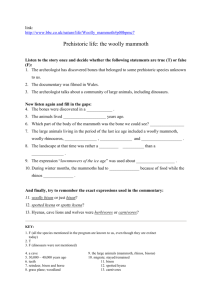
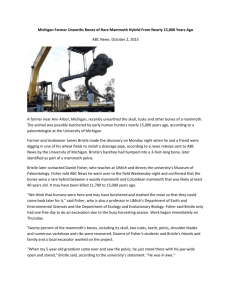

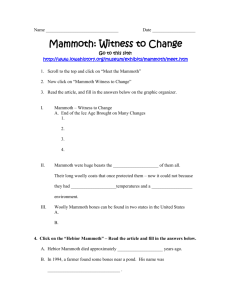
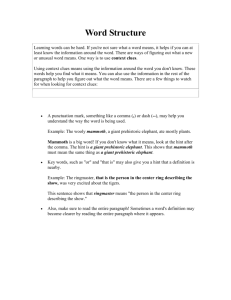
![[date] Mr. Theodore Schade Mr. Steven L. Nelson Air Pollution](http://s3.studylib.net/store/data/007013598_1-3d330ddff330ed2bd0a1f2fb95eff24b-300x300.png)
